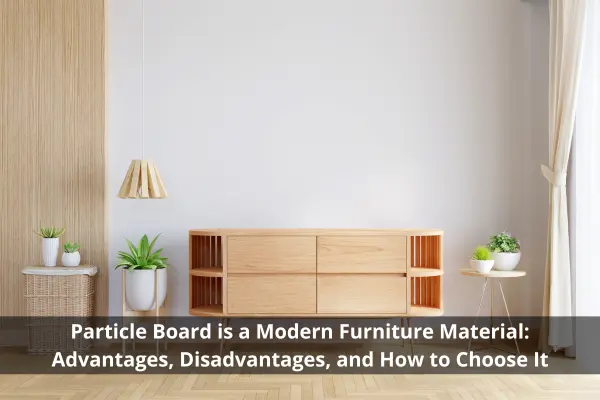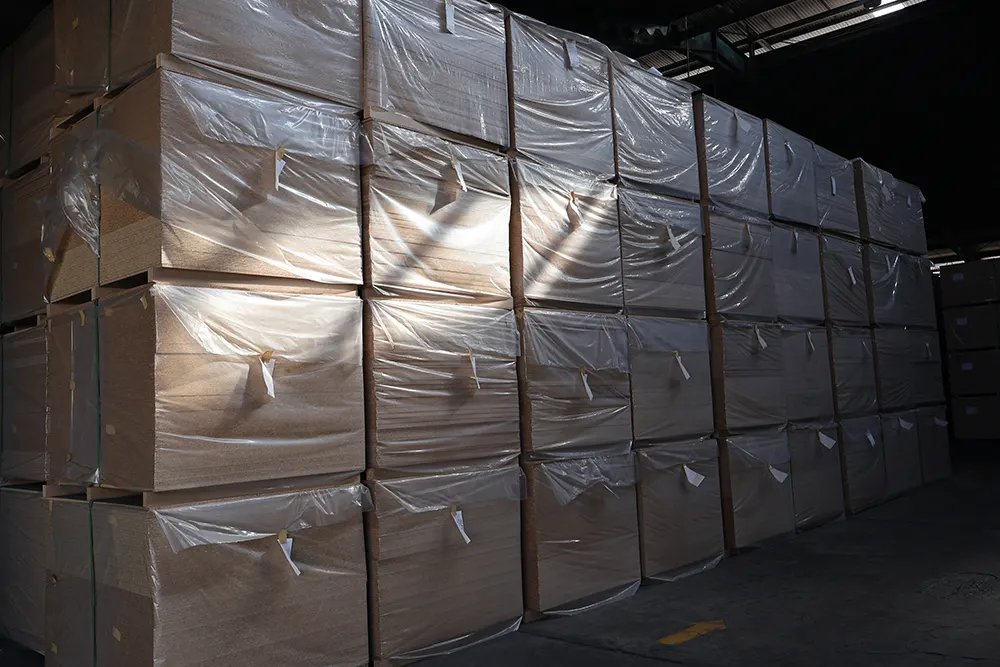Particle board is a material that is becoming increasingly popular in the world of furniture and construction. Often used as a more economical and environmentally friendly alternative to solid wood, particle board offers various advantages that make it a smart choice for many applications. But what exactly is particle board? Why is this material in such high demand, and what are its advantages and disadvantages? This article will delve into particle board, providing insights into its composition, uses, benefits, and tips for choosing high-quality particle board.

What Is Particle Board?
Particle board is a type of engineered wood product made from sawdust, wood chips, and other wood residues mixed with adhesives, then compressed into sheets. The manufacturing process involves combining wood particles with resin, such as urea-formaldehyde or melamine-formaldehyde, which is then pressed with high temperature and pressure to form strong and uniform panels.
Advantages of Particle Board
- Environmentally Friendly: One of the main advantages of chipboard is its eco-friendly nature. Since manufacturers make it from wood scraps that might otherwise go to waste, using it helps reduce wood waste and optimize the use of natural resources. This makes particle board a more sustainable option compared to solid wood, which requires tree felling.
- Affordable Price: Compared to solid wood materials, chipboard is much more affordable. This makes it a very economical choice for various projects, from household furniture to commercial applications. With a lower budget, you can get furniture or decor with an attractive and functional appearance.
- Smooth and Uniform Surface: Particle board has a smooth and uniform surface, making it easy to be coated with veneer, laminate, or paint. This allows for various design and finishing options, making it flexible for different interior styles. Because it lacks natural wood grains, chipboard is less likely to shrink or warp with temperature or humidity changes.
- Easy to Shape and Cut: This material is easy to shape and cut, making it suitable for creating furniture with complex designs. This advantage makes chipboard an ideal choice for mass furniture production, where the need for uniform and precise cuts is essential.
Disadvantages of Particle Board
- Strength and Durability: Although strong enough for various applications, chipboard not as strong as solid wood or plywood. This material is susceptible to damage from impacts or excessive loads. Therefore, the use of chipboard is more recommended for furniture that does not need to bear heavy loads or experience much friction.
- \Vulnerable to Water: Chipboard has a weakness against moisture and water. If exposed to water, this material can swell and lose its strength. Therefore, avoid using it in areas with high humidity or frequent water exposure, such as bathrooms or unprotected kitchens.
- Susceptibility to Insects and Mold: Particle board is more vulnerable to insects and mold compared to other wood materials.However, you can address this with chemical treatments or additional coatings to increase resistance to insects and mold.
Tips for Choosing Quality Chipboard
- Thickness: Choose chipboard with a thickness suitable for the desired application. Greater thickness usually provides better strength but also adds weight and cost.
- Type of Adhesive: Ensure that the chipboard uses safe and quality adhesives. Adhesives with low formaldehyde emissions are recommended to reduce health risks.
- Finishing Quality: Check the surface quality of the particle board. Make sure there are no bubbles, cracks, or other irregularities that could affect the appearance and durability of the material.
- Coating: For use in areas that may be exposed to moisture, choose chipboard already coated with high-quality laminate or veneer to protect it from water and moisture.
Applications of Chipboard
Manufacturers often use chipboard in various applications, especially in the furniture industry. Here are some common applications of particle board:
- Household Furniture: Manufacturers widely use chipboard to make furniture such as tables, cabinets, shelves, and beds. Its smooth surface and compatibility with various types of veneer or laminate allow it to produce attractive furniture at a lower cost.
- Kitchen Cabinets: Due to its affordable price and ease of shaping, manufacturers often use chipboard to make kitchen cabinets. However, it is important to note that chipboard used in kitchen areas must have good coatings to protect it from moisture.
- Wall Panels and Partitions: Manufacturers also use chipboard as a material for wall panels and partitions. With the right finishing, this material can provide an elegant and modern look to a room.
- Stages and Decorations: In the entertainment industry, creators often use chipboard to build temporary stages and decorations because it is lightweight and easy to shape as needed.
Particle Board Maintenance
To keep particle board furniture durable and long-lasting, proper maintenance is crucial. Here are some maintenance tips for particle board:
- Avoid Moisture: Keep chipboard away from areas with high humidity or frequent water exposure. If necessary, add protective layers such as laminate or veneer to protect the surface.
- Use a Dry Cloth: To clean the surface of the particle board, use a dry or slightly damp cloth. Avoid using excessive water or harsh chemical cleaners that could damage the surface.
- Manage Load: Avoid placing too much weight on chipboard furniture. Although strong, this material has limitations in bearing excessive loads.


